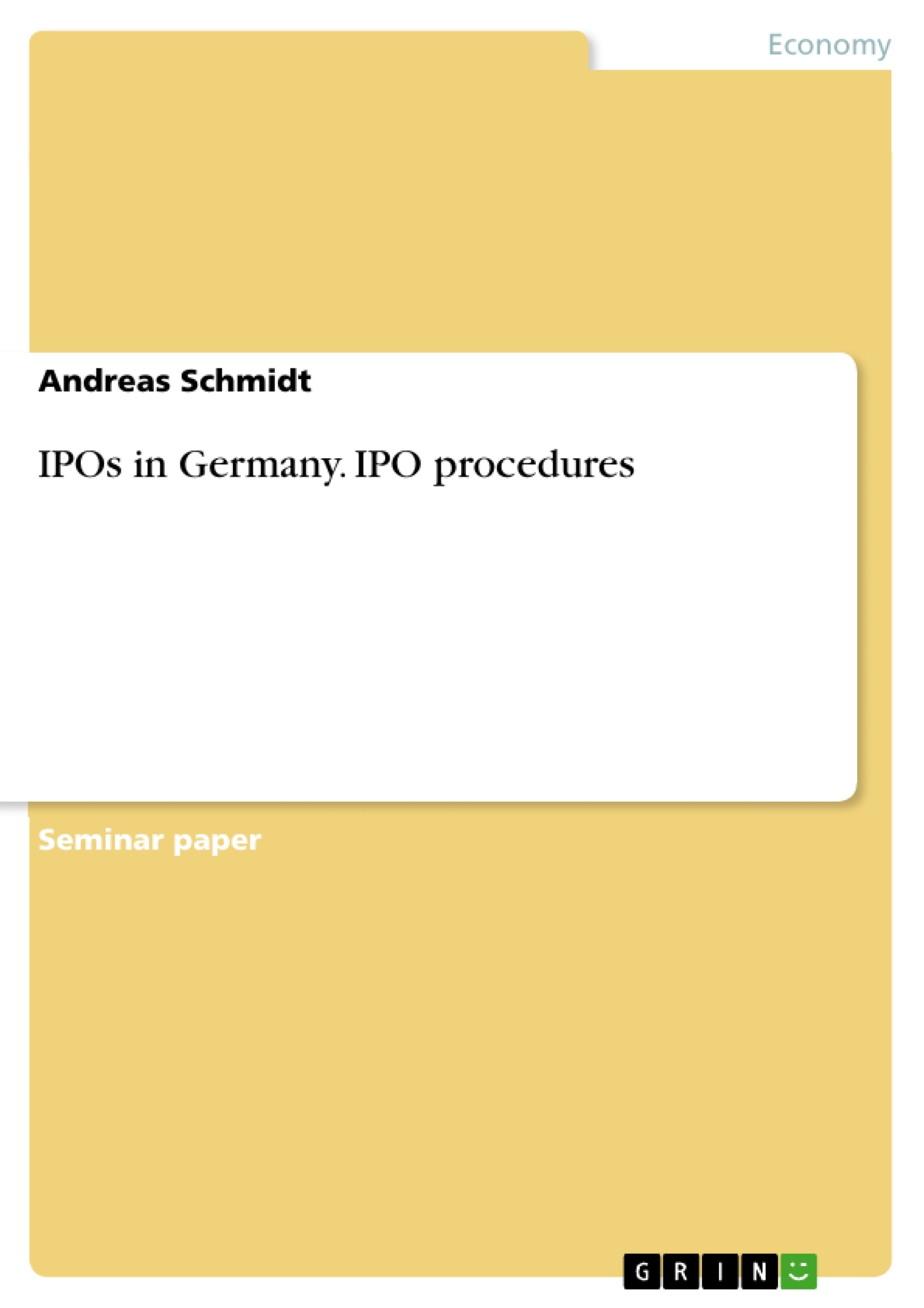It was the 25th of April in 2013 when the newspapers headlined the successful initial public offering (IPO) of Evonik, the German chemistry company. “Evonik finally finds the right chemistry” reported the Financial Times whilst Reuters wrote “Evonik celebrates stock market premiere”. Prior to the successful listing in 2013, Evonik had postponed such transaction three times already, citing adverse market conditions as the reason. Adverse market conditions are widely used as the most common reason for withdrawing or postponing an IPO, with insufficient investor demand also being given as an explanation to not proceed with the transaction, as evidence by German real estate company Deutsche Annington.
Listing a company on a public stock market is not an easy task, but rather a very time consuming and expensive process. The most crucial part of the entire transaction is finding the right offer price at which company is offering its shares to investors. The aim of this paper is to explain and describe the IPO process in general, with a special focus of the techniques on how the issue price will be derived.
The thesis begins with a theoretical section describing and explaining the basic process of an IPO as well as clarifying basic definitions. Subsequently, the main techniques how the issue price is set will be explained and analyzed. The theoretical part is followed by a practical section, using the example of Evonik to analyze how its issue price was determined. The last chapter contains a final conclusion summarizing the findings of the paper.
Inhaltsverzeichnis (Table of Contents)
- Introduction
- Definition and theoretical procedure of an IPO
- Definition
- Theoretical procedure of an IPO
- Options for determining the issue price for an IPO
- Fixed Price procedure
- Bookbuilding procedure
- Auction procedure
- The IPO of German chemistry-company Evonik
- Case study
- Critical evaluation
- Conclusion
Zielsetzung und Themenschwerpunkte (Objectives and Key Themes)
This paper aims to explain and describe the IPO process in general, with a particular focus on the techniques used to derive the issue price. The thesis explores the theoretical basis of IPOs, including definitions and procedures, before delving into specific methods for setting the issue price. The paper then applies these concepts to the real-world case of Evonik's IPO, analyzing how its issue price was determined.- The process of an Initial Public Offering (IPO)
- Methods for determining the issue price in an IPO
- The case study of Evonik's IPO
- Challenges and considerations in IPOs
- The importance of investor demand in successful IPOs
Zusammenfassung der Kapitel (Chapter Summaries)
- Introduction: This chapter sets the scene by discussing the context of Evonik's IPO in 2013, highlighting the challenges of successfully listing a company on the stock market and the importance of determining the right offer price.
- Definition and Theoretical Procedure of an IPO: This section provides a comprehensive overview of the IPO process, defining key terms and outlining the theoretical stages involved in taking a company public.
- Options for Determining the Issue Price for an IPO: This chapter explores various methods used to set the issue price for an IPO, analyzing the Fixed Price procedure, Bookbuilding procedure, and Auction procedure.
- The IPO of German Chemistry-Company Evonik: This chapter delves into the real-world case of Evonik's IPO, providing a detailed case study and critical evaluation of its IPO process, including how the issue price was determined.
Schlüsselwörter (Keywords)
This paper examines the complex process of Initial Public Offerings (IPOs), specifically focusing on the determination of the issue price. Key areas of focus include IPO procedures, theoretical frameworks, and practical considerations. The case study of Evonik's IPO provides a concrete example to illustrate the application of these concepts, highlighting factors such as investor demand and market conditions.- Quote paper
- Andreas Schmidt (Author), 2018, IPOs in Germany. IPO procedures, Munich, GRIN Verlag, https://www.grin.com/document/437694



